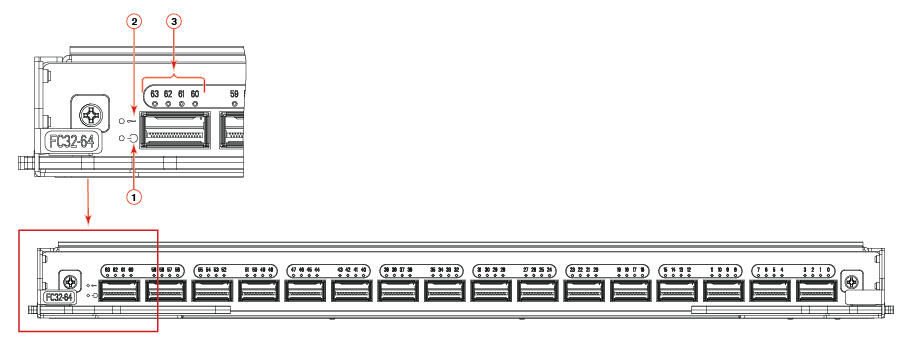

 Knowledge Base +
Knowledge Base +  2024.01.09
2024.01.09The FC32-64 port blade contains 16 QSFP28 ports. Each QSFP optics supports four ports for connecting FC devices. With a breakout cable connected to the QSFP transceiver, connections are provided for up to four devices.
Flexport allows you to configure individual ports on the FC32-64 blade for Fibre Channel (FC) or Fibre Channel over Ethernet (FCoE) connections when qualified FC or Ethernet transceivers are installed in the ports. Configure FC (default) or Ethernet operation for a port using the portcfgflexport command.
FC operation allows the connection of blades to fabric storage, servers, and switches. An FC transceiver must be installed in a port to configure FC operation for that port. Supported FC transceivers include 4x32Gb/s QSFP28 and 4x16Gb/s QSFP+ transceivers.
FCoE operation allows the connection of blades to FCoE devices as part of a unified fabric. The FCoE devices can be servers or connections through an FCoE Initialization Protocol snooping bridge (FSB). An Ethernet transceiver must be installed in a port to configure FCoE operation for that port. Supported Ethernet transceivers include 40GbE, 4x10GbE, and 4x25GbE QSFP+ transceivers.

Note:
When the QSFP is operating in breakout mode, each of the four LEDs above the QSFP+ port indicates the status of an individual breakout port. When the QSFP is operating in nonbreakout mode (Ethernet QSFPs only), the primary port LED (leftmost LED) indicates the status of the single, unified QSFP port. For example, for a 40GbE QSFP in breakout mode, each of the four LEDs indicates the status of a 10GbE port. In nonbreakout mode, the primary LED (leftmost LED) indicates the status of the unified 40GbE port.
Subscribe to the newsletter
for all the latest updates.
2-5# Building, Tongfuyu Industrial Zone, Aiqun Road, Shiyan Street, Baoan District, Shenzhen. China
